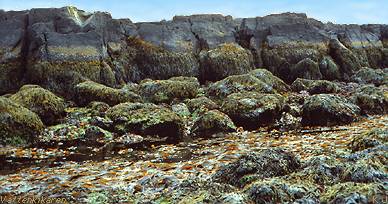 |
|
Shallow
areas are common along the Swedish coast. Here, the winds that press water
towards the land are of special interest because the undercurrents that
carry the water away from land, are slowed down because of friction against
the bottom.
Sometimes the weather can start periodic variations of the
sea level. This happens in the Baltic, because of its form and size, so
called standing waves occurr. This phenomenon is similar to when
one trys to carry a bowl of water whilst supporting it against one body
- the water starts oscillating. The water level becames higher in one side
of the bowl compared to the other, and starts washing back and forth. In
the Baltic when a powerful south-westerly occurrs, there can be a difference
of about 1 metre in water level between the Gulf of Finland and
the waters around Kiel in Germany. When the winds diminish, currents try
to level off these differences, but the currents are so powerful, so that
half a day later the water level is the opposite, with high water in the
southern Baltic. Thereafter, the currents turn and run to the north again.
Variations in the slope of the surface can continue over a period of several
days.

| On Iceland, it is the tides that effect the water
level the most. On this beach (pictured above), there is a difference
of about 4 m between high and low water, occurring twice daily.
Such variations do not occurr along the Swedish coastline, not even
over long periods. In the channel, red-yellow and brown leaves of
different
kelp specie are seen. |
 |
Page 23 of
52 |
 |
|



